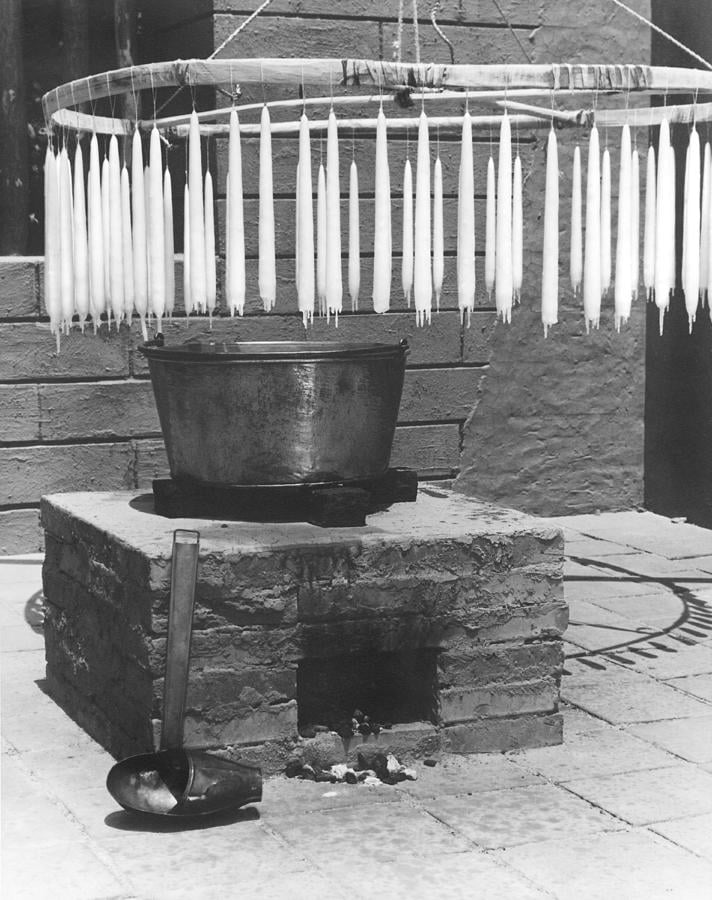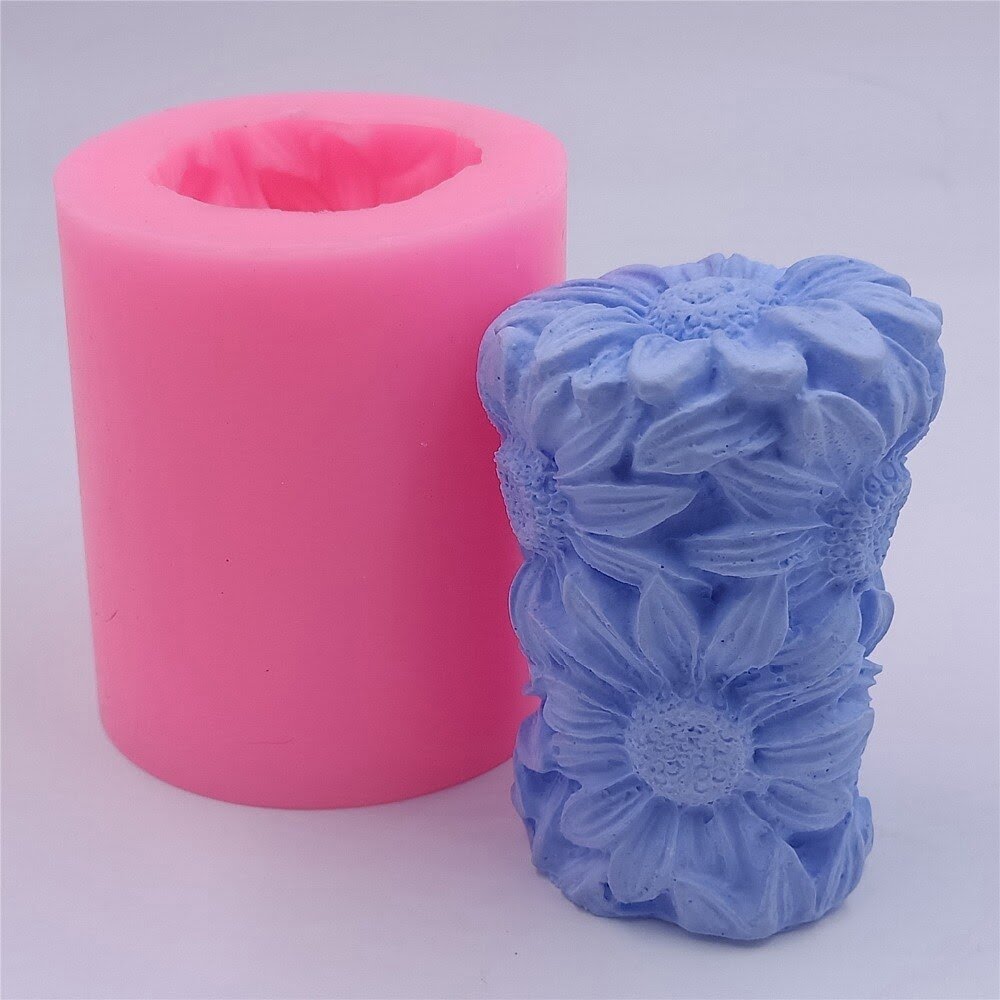Candle making videos for beginners offer an excellent opportunity to explore the world of candle making and its therapeutic benefits. Discover why this hobby is perfect for beginners, as we delve into the reasons behind its popularity. From relaxation and stress relief to the satisfaction of creating your customized candles, candle making has something to offer everyone.
Many individuals are drawn to candle making for its therapeutic qualities. The process of melting wax, choosing scents, and pouring it into molds or containers can be incredibly relaxing and meditative. It allows you to focus your attention on a creative task, providing a welcome break from the stresses of everyday life. Whether you’re a busy professional or someone looking for a new hobby, candle making offers an escape and promotes mindfulness.
In addition to its therapeutic benefits, candle making also provides a sense of fulfillment that comes from crafting something with your own hands. The ability to customize candles allows you to express your creativity and personal style.
You can experiment with different fragrances, colors, and styles to create unique pieces that reflect your personality or match your home decor. With candle making videos for beginners, you’ll learn step-by-step techniques that will empower you to unleash your creativity and bring your imagination to life through the art of candle making.
Join us as we explore the world of candle making in this comprehensive article. Through detailed tutorials and expert guidance, we will provide everything you need to know about starting your own journey in this rewarding hobby.
From acquiring essential tools and materials to troubleshooting common issues, our goal is to equip beginners with the knowledge they need to confidently embark on their candle making adventure. So grab a pen and paper, prepare to immerse yourself in the fascinating craft of candle making through our instructional videos designed specifically for beginners.
The Basics
When it comes to candle making, having the right tools and materials is essential to ensure a successful and enjoyable experience. In this section, we will outline everything you need as a beginner candle maker, explain the importance of each item, and provide recommendations for budget-friendly options.
Wax
The first and most crucial ingredient in candle making is wax. There are several types of wax to choose from, including soy wax, paraffin wax, beeswax, and palm wax. Each type has its own unique characteristics and advantages.
Soy wax, for example, is popular among beginners due to its ease of use and affordability. It also produces clean-burning candles with a longer burn time. Paraffin wax is another common choice that melts easily and offers a wide range of colors and fragrances.
Wicks
Wicks are responsible for carrying the flame in your candle. They come in various sizes and materials such as cotton or hemp. When selecting wicks, it’s important to consider the diameter of your container or mold to ensure proper burning. Using the wrong wick can result in issues like uneven burning or excessive smoking. To make things easier for beginners, pre-tabbed wicks with metal sustainer clips are available for convenience.
Containers or Molds
Next on the list are containers or molds where you will pour your melted wax. Container candles are simple to make as they involve pouring the melted wax directly into glass jars or containers of your choice. Alternatively, you can use molds for creating pillar candles or votives that stand alone without a container. Silicone molds are recommended for their flexibility when removing hardened candles.
Thermometer
A thermometer is an indispensable tool in candle making as it ensures that your wax reaches the correct temperature before pouring it into containers or molds. Different types of wax have specific melting and pour temperatures, so using a thermometer will help you achieve the best results and avoid issues like sinking or cracking candles.
Fragrances and Colorants
To add personality and style to your candles, you can incorporate fragrances and colorants. Fragrance oils are specially formulated for use in candles and are available in a wide range of scents. When selecting fragrance oils, make sure they are suitable for candle making as other types may not withstand high temperatures. Similarly, color blocks or liquid dyes specifically designed for candle making are recommended to achieve vibrant colors without affecting the burning properties of the wax.
Other Tools
In addition to the essentials mentioned above, there are a few other tools that will come in handy during the candle making process. These include a double boiler or a heat-resistant container for melting wax, a pouring pitcher with a spout for easy pouring, a scale for accurate measuring of ingredients, and adhesive stickers or labels to customize and name your creations.
With these essential tools and materials at your disposal, you’re ready to dive into the world of candle making. Always remember to follow safety precautions when handling hot wax and open flames. In the next section, we will provide step-by-step instructional videos to guide you through the process of creating your first candles.
Candle Making Techniques
When it comes to learning a new skill, there’s no better way than watching someone do it firsthand. For beginners looking to dive into the world of candle making, instructional videos are invaluable resources that can provide clear and detailed guidance every step of the way. In this section, we have curated a selection of the best candle making videos for beginners, covering various techniques such as container candles, pillar candles, and taper candles.
Each video tutorial included in our curated selection offers step-by-step instructions accompanied by detailed explanations and helpful tips. Whether you prefer visual learning or just want some extra guidance, these videos will equip you with the knowledge and confidence to create beautiful candles right from the start. From understanding the proper temperature for melting wax to achieving even and clean burns, these videos cover all aspects of candle making.
To give you a taste of what you can expect from our curated selection of instructional videos for beginners, here are three examples:
1. “Beginner’s Guide to Container Candles”: This video walks you through the process of creating container candles using simple materials that are easy to find. It explains how to properly wick containers, choose fragrances, and achieve a smooth and professional-looking finish.
2. “Pillar Candle Making for Beginners”: If you’re interested in making pillar candles, this video provides a comprehensive tutorial on creating unique designs using molds and different coloring techniques. It also covers important topics like choosing the right wick size and troubleshooting common issues with pillar candles.
3. “Taper Candle Making 101”: Taper candles add an elegant touch to any room or occasion. This video demonstrates how to make tapered candles from scratch by hand-dipping method or using molds. It also shares tips for achieving straight and long-lasting tapers.
By following along with these instructional videos and practicing their techniques, you’ll be well on your way to mastering the art of candle making. Remember, practice makes perfect, so don’t be discouraged if your first attempts aren’t flawless. With time and experience, you’ll gain confidence in your skills and may even develop your own unique candle making style.
| Video Title | Description |
|---|---|
| “Beginner’s Guide to Container Candles” | Learn how to create container candles using simple materials and achieve a smooth finish. |
| “Pillar Candle Making for Beginners” | Create unique designs with molds and different coloring techniques for pillar candles. |
| “Taper Candle Making 101” | Make elegant tapered candles by hand-dipping or using molds, achieving straight and long-lasting tapers. |
Safety First
When engaging in any craft or hobby, safety should always be a top priority. Candle making is no exception. While it can be a fun and rewarding activity, it is important to take certain precautions to ensure a safe and enjoyable experience. By following some essential safety measures, you can prevent accidents and fully enjoy the process of candle making.
One of the first safety precautions to consider when making candles is to work in a well-ventilated area. Some candle-making materials, such as fragrance oils, can release fumes that may be harmful when inhaled. Opening windows or using fans can help to circulate fresh air and minimize exposure to these fumes.
Another crucial safety measure is to never leave your melting wax unattended. Wax can reach high temperatures and poses a fire hazard if left unattended on the heat source. Always stay nearby and keep an eye on your melting wax.
It is also important to use the appropriate equipment when handling hot wax and other materials involved in candle making. Heat-resistant gloves are recommended for protecting your hands from burns. Long-sleeved shirts and pants can also provide an extra layer of protection.
| Safety Precautions | Explanation |
|---|---|
| Work in a well-ventilated area | Minimizes inhalation of harmful fumes |
| Never leave melting wax unattended | Avoids potential fire hazards |
| Use heat-resistant gloves | Protects hands from burns while handling hot wax |
| Wear long-sleeved shirts and pants | Provides extra protection from hot wax and other materials |
By adhering to these safety precautions, you can minimize the risks associated with candle making and create a safe environment for yourself and others. Remember, the goal is to enjoy the process of making candles while ensuring your well-being. With these precautions in mind, you can confidently dive into your candle making journey.
Choosing the Right Wax
When it comes to candle making, selecting the right wax is essential for achieving successful results. With the wide variety of waxes available in the market, it can be overwhelming for beginners to know which one to choose. In this section, we will explore different types of wax suitable for candle making and discuss their pros and cons.
One common type of wax used by beginners is soy wax. Soy wax is a natural vegetable-based wax that is known for its clean-burning properties. It has a lower melting point compared to other waxes, making it easier to work with for beginners.
Soy wax also has excellent scent throw capabilities and allows for vibrant colors. However, one downside of soy wax is that it tends to have a softer texture and may not hold up well in hotter climates.
Another popular choice for beginners is paraffin wax. Paraffin wax is derived from petroleum and is readily available at most craft stores. It has a higher melting point compared to soy wax, which makes it suitable for container candles and votives that need to withstand heat. Paraffin wax also provides an excellent scent throw and holds colors well. However, it is important to note that paraffin wax is not as environmentally friendly as soy or other natural waxes.
For those looking for a vegan-friendly option, palm wax is worth considering. Palm wax comes from sustainable sources such as palm oil trees and offers unique crystal patterns when cooled. It has a high melting point like paraffin wax but without the environmental concerns associated with it. However, palm wax can be more challenging to work with due to its crystallization process.
Fragrance and Color
Candle making is not just about creating a source of light; it’s also an opportunity to infuse your environment with delightful scents and visually pleasing colors. In this section, we will explore the importance of fragrance and color in candle making, providing guidance on how to select the right combinations that will enhance the overall experience of your candles.
When it comes to fragrances, there are numerous options available, ranging from floral and fruity scents to warm and cozy aromas. It’s important to choose scents that you personally enjoy but also consider their compatibility with different candle types and occasions. For example, lavender scents work well for relaxation candles, while citrus notes are great for energizing ones.
To properly incorporate fragrances into your candles, it is essential to measure them accurately. Most fragrance oils come with guidelines regarding the recommended ratio of oil to wax. Following these measurements ensures that the scent isn’t overpowering or too weak in the final product. Additionally, consider combining multiple scents to create unique blends that suit your preferences.
Just as fragrance adds depth and character to your candles, colors play a crucial role in enhancing their visual appeal. Candle dyes or color blocks are commonly used to achieve desired hues. From vibrant and bold colors to subtle pastels or natural tones, the possibilities are endless for customizing your candles’ appearance.
Similar to fragrances, precise measurements are vital when incorporating colors into your candles. Start by adding a small amount of dye or color block at a time until you achieve the desired shade. Keep in mind that different waxes may require varying amounts of dye; therefore, it is advisable always to follow the manufacturer’s recommendations for optimal results.
Troubleshooting Common Candle Making Issues
Candle making can be a rewarding and enjoyable hobby, but like any craft, it comes with its own set of challenges. As a beginner, you may encounter common issues during the candle making process. This section aims to address those challenges and provide troubleshooting solutions to help you create professional-looking candles.
1. Frosting: One common problem that beginners face is frosting, which refers to the white flakes or spots that appear on the surface of the candle. To prevent frosting, make sure your wax is properly heated and cooled. Avoid pouring your fragrance oil when the wax is too hot, as this can contribute to frosting. Additionally, consider using additives such as stearin or vybar to minimize frosting.
2. Tunneling: Tunneling occurs when the candle burns down in a tunnel shape instead of evenly across the surface. To avoid tunneling, ensure that you use a suitable wick size based on the diameter of your container or mold. Trim the wick before each burn session and allow it enough time to pool fully during each burn.
3. Wick Related Problems: Choosing the right wick size for your candle is crucial to ensure proper burning. If your wick is too small, it may cause poor fragrance release or an uneven burn. On the other hand, a wick that is too large may result in excessive soot or a high flame. Experiment with different wick sizes and types until you find one that suits your specific candle style and wax type.
In addition to these common issues, other problems like sinkholes, cracking, or uneven coloring may arise during your candle making journey. However, don’t be discouraged. Remember that practice makes perfect, and every mistake is an opportunity for learning and improvement.
By troubleshooting these common candle making issues with patience and determination, you’ll become more adept at creating beautiful candles that are both visually appealing and functional. Don’t hesitate to seek advice from experienced candle makers, participate in online forums, or consult instructional videos when facing difficulties. With time, practice, and troubleshooting know-how, you’ll soon be able to produce candles that rival those found in stores.
Beyond Basics
Expanding Your Candle Making Repertoire
Once you have mastered the basics of candle making, it’s time to expand your repertoire and explore more advanced techniques. There are countless possibilities for taking your candle making skills to the next level and creating even more unique and beautiful candles. Here are some ideas to inspire you:
Advanced Candle Designs
One way to elevate your candle making skills is by experimenting with different candle designs. Move beyond simple container candles and explore pillar candles, votive candles, or even sculpted candles. These advanced designs can add a touch of elegance and sophistication to your creations. Research various techniques such as layering different colors of wax or using molds to create intricate shapes.
Using Specialty Ingredients
Another way to challenge yourself as a candle maker is by incorporating specialty ingredients into your candles. Consider adding botanicals such as dried flowers, herbs, or spices for a visually stunning effect. You could also experiment with using different types of wax, like soy wax or beeswax, which offer unique qualities and benefits. Special fragrance oils or essential oils can also enhance the aroma of your candles.
Candle Decoration and Packaging
Candle making is not just about the actual creation process – it’s also about presentation. Take your candle making skills to the next level by exploring different methods of decorating and packaging your finished products. Consider using labels with custom designs, ribbons, or ornamental jars or tins that complement the aesthetics of your candles. The way you present your candles can make them even more appealing to potential customers if you decide to sell them.
Continued Learning and Inspiration
To continue expanding your knowledge and skills in candle making, always be open to learning from others in the community. Join online forums or social media groups dedicated to candle making where you can exchange ideas, ask questions, and get inspired by the work of others. Attend workshops or classes, or consider investing in advanced candle making courses that delve deeper into specific techniques or styles.
Taking your candle making skills to the next level allows you to unleash your creativity and showcases your unique style. By exploring advanced techniques, experimenting with different ingredients, and enhancing your candles’ presentation, you can truly elevate your creations. Embrace the journey of learning and continue to expand your skills as a candle maker – the possibilities are endless.
Conclusion
In conclusion, candle making is truly the perfect hobby for beginners. Not only does it provide therapeutic and relaxing benefits, but it also allows for a sense of satisfaction in creating your own customized candles. With the comprehensive list of essential tools and materials provided, beginners will have everything they need to get started on their candle making journey.
The step-by-step instructional videos mentioned in this article are an excellent resource for beginners. They offer detailed explanations and tips on various techniques such as container candles, pillar candles, and taper candles. By following these video tutorials, beginners can easily learn the craft of candle making and create beautiful candles with confidence.
Safety is always a priority when it comes to any hobby or DIY activity, and candle making is no exception. It is important to take precautions and be aware of potential hazards to prevent accidents. By following the safety measures outlined in this article, beginners can ensure a safe and enjoyable experience while making candles.
As beginners gain more experience and confidence in their candle making skills, they can take their creativity to the next level. Exploring advanced techniques opens up a whole new world of possibilities in candle making. Additional resources and tutorials recommended in this article provide ample opportunities for further learning.
In conclusion, beginning your candle making journey is a wonderful way to unleash your creativity. Embrace the joy of personalizing your own candles with fragrances and colors that reflect your personality. Don’t wait any longer – start your candle making journey today and enjoy the therapeutic benefits while creating beautiful works of art.

Welcome to my candle making blog! In this blog, I will be sharing my tips and tricks for making candles. I will also be sharing some of my favorite recipes.





